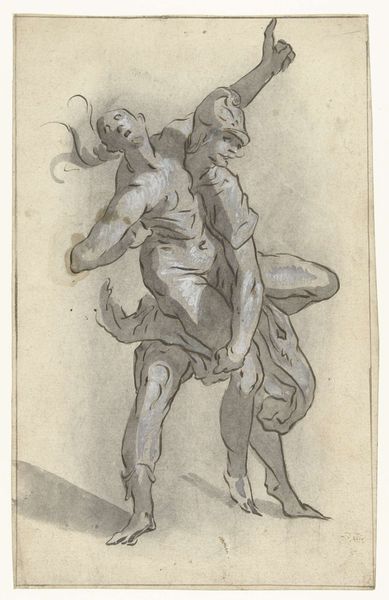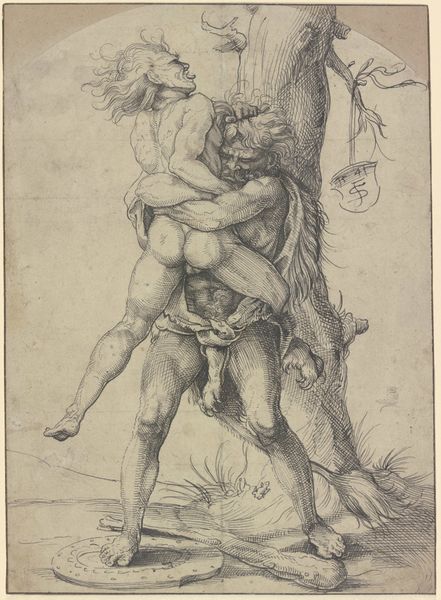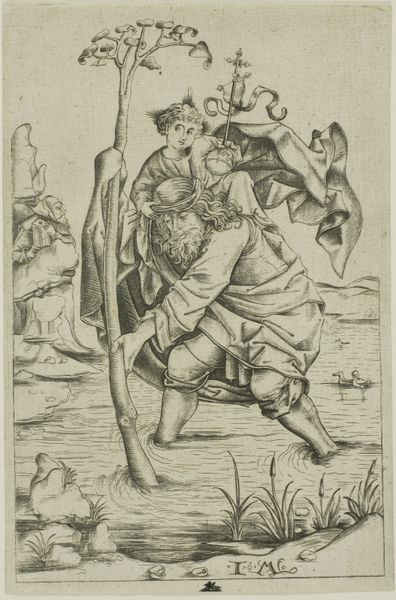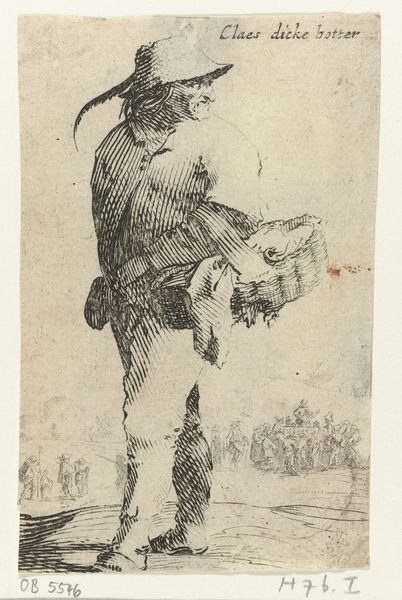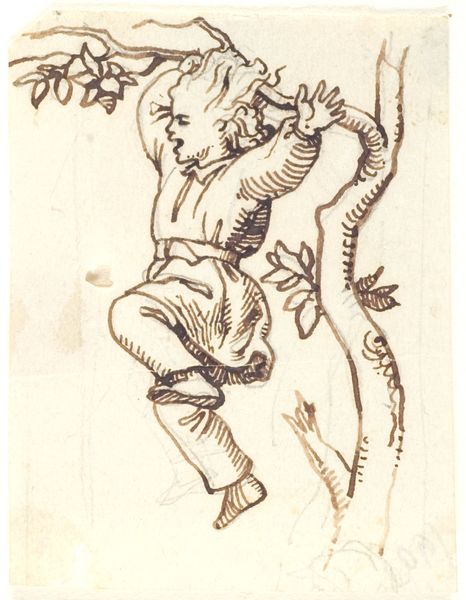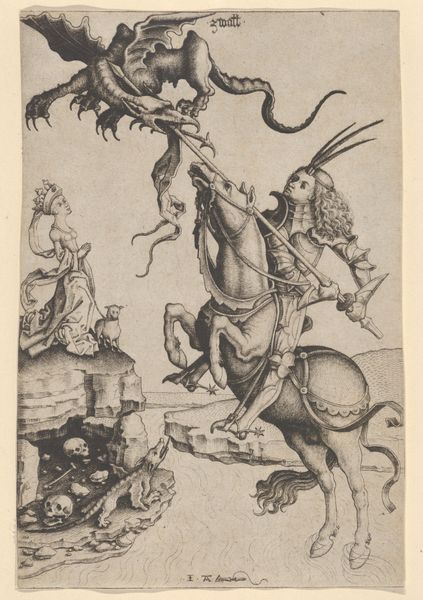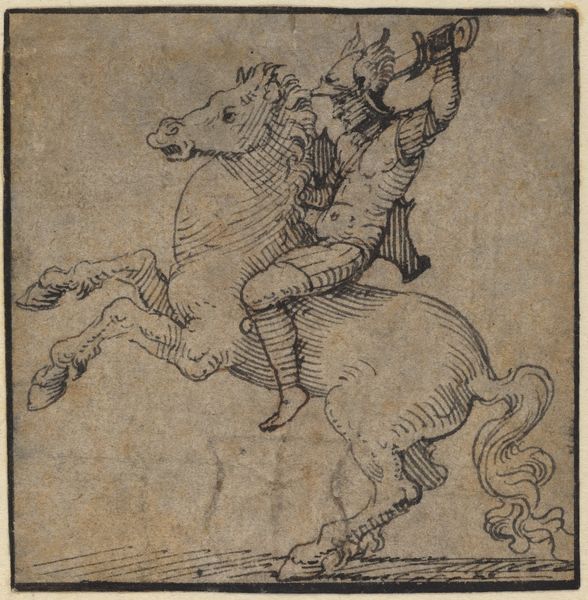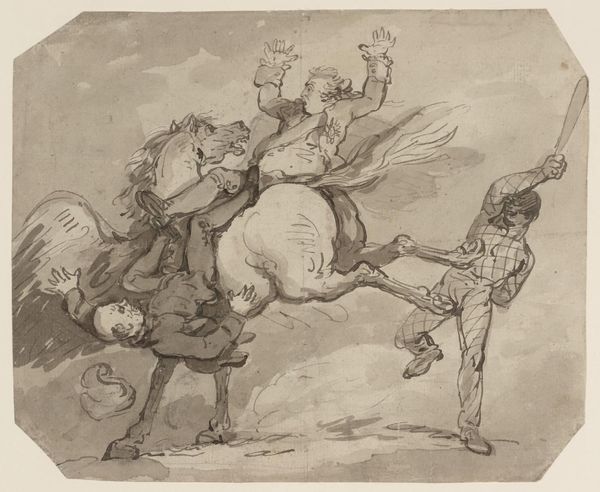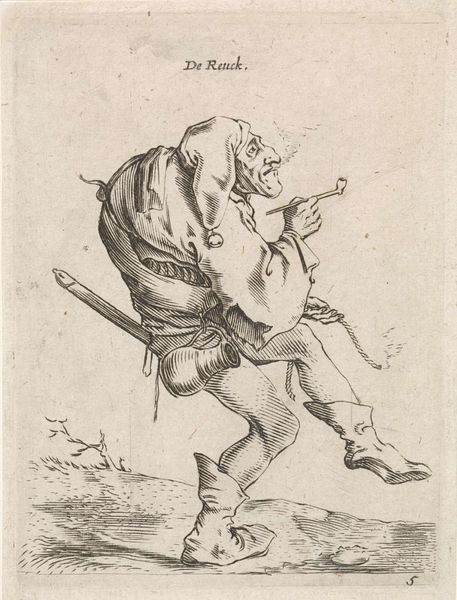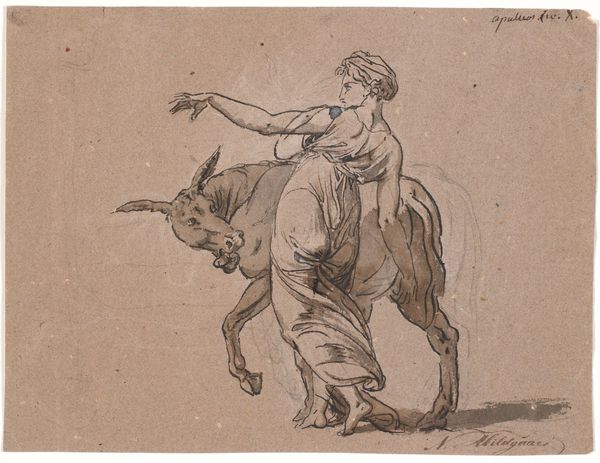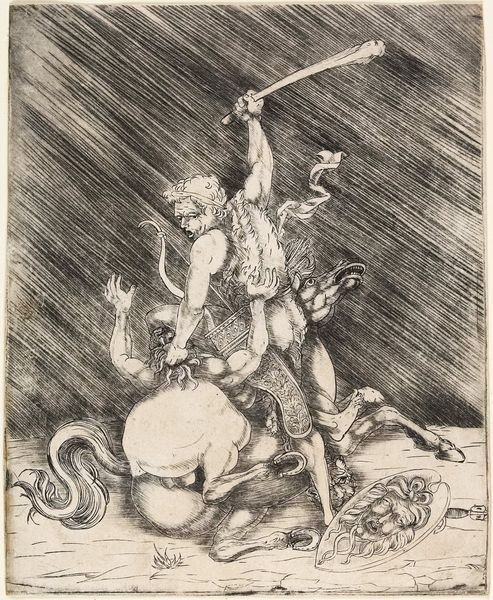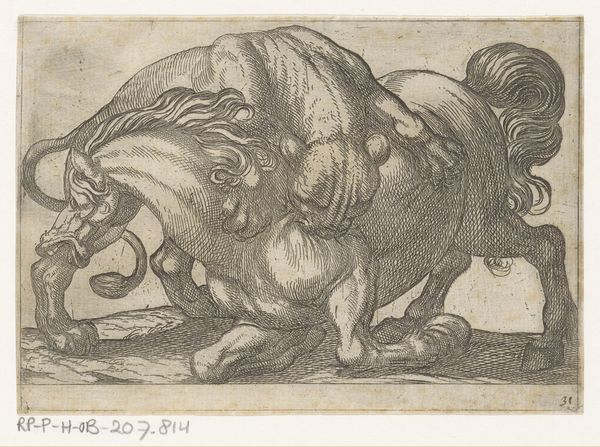
drawing, ink
#
drawing
#
imaginative character sketch
#
light pencil work
#
quirky sketch
#
narrative-art
#
baroque
#
pencil sketch
#
figuration
#
personal sketchbook
#
ink
#
ink drawing experimentation
#
sketchbook drawing
#
history-painting
#
storyboard and sketchbook work
#
sketchbook art
#
fantasy sketch
Dimensions: height 100 mm, width 87 mm
Copyright: Rijks Museum: Open Domain
Curator: I'm immediately struck by the intense movement in this small work. The figures seem to strain against each other, caught in a moment of fierce conflict. Editor: Indeed. What we're seeing is "Jacob Wrestling with the Angel," an ink drawing attributed to Gerard ter Borch the Elder, dating back to around 1617-1619. It resides here at the Rijksmuseum. Ter Borch, of course, lived through a period of intense religious and political upheaval, namely the height of the Thirty Years' War and the rise of Protestantism, events I'm sure profoundly affected his artistry. Curator: Absolutely. And the biblical story itself is so laden with symbolism, isn't it? Jacob’s struggle isn’t just physical; it represents his internal struggle, his grappling with faith, identity, and destiny. That’s clear from the angel’s piercing gaze directly into Jacob’s eyes, conveying an awareness of much more than the wrestling. Editor: Precisely. The wrestling match functions as a metaphor for confronting the divine. And for ter Borch's likely audience in the Dutch Republic, this could be a potent symbol for their own battles against perceived injustice and religious oppression. The visual economy of this piece reflects a deeply embodied struggle against exterior or interior conflicts, with the angel figure representing authority or religious experience, but also the fight against it. Curator: The material contributes so much here too. The ink allows for delicate lines and shading. You can see how he’s captured the tension in their muscles. And ink is a fantastic material for psychological concepts like tension and strife. It evokes the weight of time. Editor: The choice of rendering this momentous meeting, pivotal for Judaism, in an intimate and private medium, a drawing on paper, creates this compelling push-and-pull dynamic. It reflects, perhaps, the changing relationships between religion, state, and personhood in 17th-century Netherlands, not only through symbolic reference to faith and the Bible. Curator: That resonates deeply. Ultimately, the drawing leaves us pondering our own struggles and the symbolic wrestling matches we all face. Editor: Right, so much can be said about how history and politics meet artistic creation to present us a glimpse into an interesting world with powerful images.
Comments
No comments
Be the first to comment and join the conversation on the ultimate creative platform.
